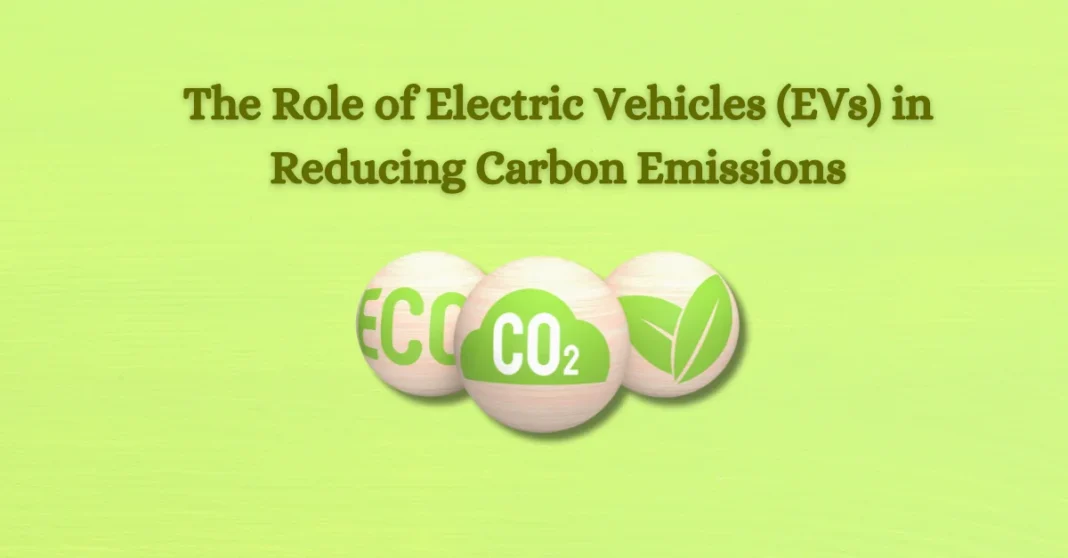As the world faces an urgent need to address climate change, transitioning to sustainable transportation solutions is becoming increasingly crucial. One of the most impactful ways to reduce carbon emissions is through the widespread adoption of electric vehicles (EVs). Here’s a closer look at how EVs are playing a vital role in combating carbon emissions:
1. Reduction of Tailpipe Emissions
- Zero-Emission Driving: Unlike traditional internal combustion engine (ICE) vehicles, EVs produce zero tailpipe emissions. This means they do not emit harmful pollutants such as carbon dioxide (CO2), nitrogen oxides (NOx), or particulate matter (PM), which contribute to air pollution and global warming.
- Cleaner Urban Air: In cities, where traffic congestion and pollution levels are high, replacing ICE vehicles with EVs can significantly improve air quality, benefiting public health and reducing the urban heat island effect.
2. Lower Carbon Footprint Over the Vehicle’s Lifetime
- Production to Disposal: While the manufacturing of EVs, particularly their batteries, may initially have a higher carbon footprint than traditional vehicles, this is offset over time. As EVs are driven, the emissions associated with their production are rapidly outpaced by the reduction in daily CO2 emissions compared to traditional vehicles.
- Energy Source Matters: The true environmental impact of an EV depends on how the electricity powering it is generated. In regions where the grid is primarily powered by renewable sources like wind, solar, or hydroelectric energy, EVs have a significantly lower carbon footprint than when charged from fossil-fuel-heavy grids.
3. Integration with Renewable Energy Sources
- EVs and Clean Energy Synergy: As the adoption of renewable energy sources grows, EVs can become even more sustainable. Charging EVs with solar, wind, or other green energy sources means their carbon emissions approach zero, making them a cornerstone of a green energy ecosystem.
- Energy Storage Potential: Electric vehicles can be seen not just as consumers of energy, but as potential storage solutions through vehicle-to-grid (V2G) technology. By feeding stored electricity back into the grid when needed, EVs can help stabilize energy supply, especially during periods when renewable generation is low.
4. Electrification of Public and Commercial Transportation
- Public Transport Transformation: Electrifying buses, taxis, and other forms of public transportation can lead to major reductions in urban carbon emissions. EVs can help significantly lower emissions in these sectors, which are often large contributors to pollution.
- Fleet Electrification: Large commercial fleets, such as delivery vans and trucks, can also benefit from electrification. This reduces fleet-related emissions, and the scale of adoption means a large impact on carbon emissions in both urban and industrial areas.
5. Decarbonizing the Global Automotive Industry
- Automakers’ Shift to EVs: As the automotive industry shifts towards electric mobility, there is a growing focus on developing energy-efficient vehicles that can be powered by renewable energy. Many leading car manufacturers are setting ambitious goals to transition their entire fleet to electric by 2035 or sooner, signaling a substantial reduction in the industry’s overall carbon footprint.
- Innovation in Battery Recycling: The development of efficient battery recycling technologies further reduces the environmental impact of EVs by repurposing critical materials, reducing waste, and lowering the need for mining raw materials.
6. Long-Term Climate Goals and EVs
- International Climate Targets: The widespread adoption of EVs is considered one of the key strategies for meeting international climate goals, such as those set by the Paris Agreement. Moving away from fossil fuels in the transportation sector is essential to achieving a net-zero carbon economy by mid-century.
- Government Policies: Many governments are providing incentives, rebates, and subsidies to promote EV adoption, recognizing that reducing emissions from transportation is crucial in meeting carbon reduction targets.
7. The Road Ahead: Challenges and Opportunities
- Battery Production and Recycling: While EVs themselves offer a substantial reduction in carbon emissions, challenges remain in the production of batteries and their eventual recycling. Continued research into sustainable mining practices, battery chemistries, and circular economy models will be essential for ensuring that EVs remain a truly green option.
- Infrastructure Development: The expansion of EV charging infrastructure is vital to facilitating the mass adoption of electric vehicles, especially in rural or underserved areas. As charging stations become more widely available, EVs will become an even more practical choice for consumers and businesses alike.
Conclusion
Electric vehicles are undeniably one of the most important tools in the fight against climate change. Their potential to reduce carbon emissions is significant, both in terms of direct tailpipe emissions and their role in supporting the integration of renewable energy sources. As the global shift to EVs accelerates, with ongoing advancements in technology, infrastructure, and policy, their contribution to reducing global carbon emissions will only grow. However, realizing their full environmental benefits will require continued investment in clean energy, better recycling practices, and further innovation in vehicle and battery technology.
#ElectricVehicles #EVs #CarbonEmissions #GreenTransportation #ZeroEmissions #GoElectric

